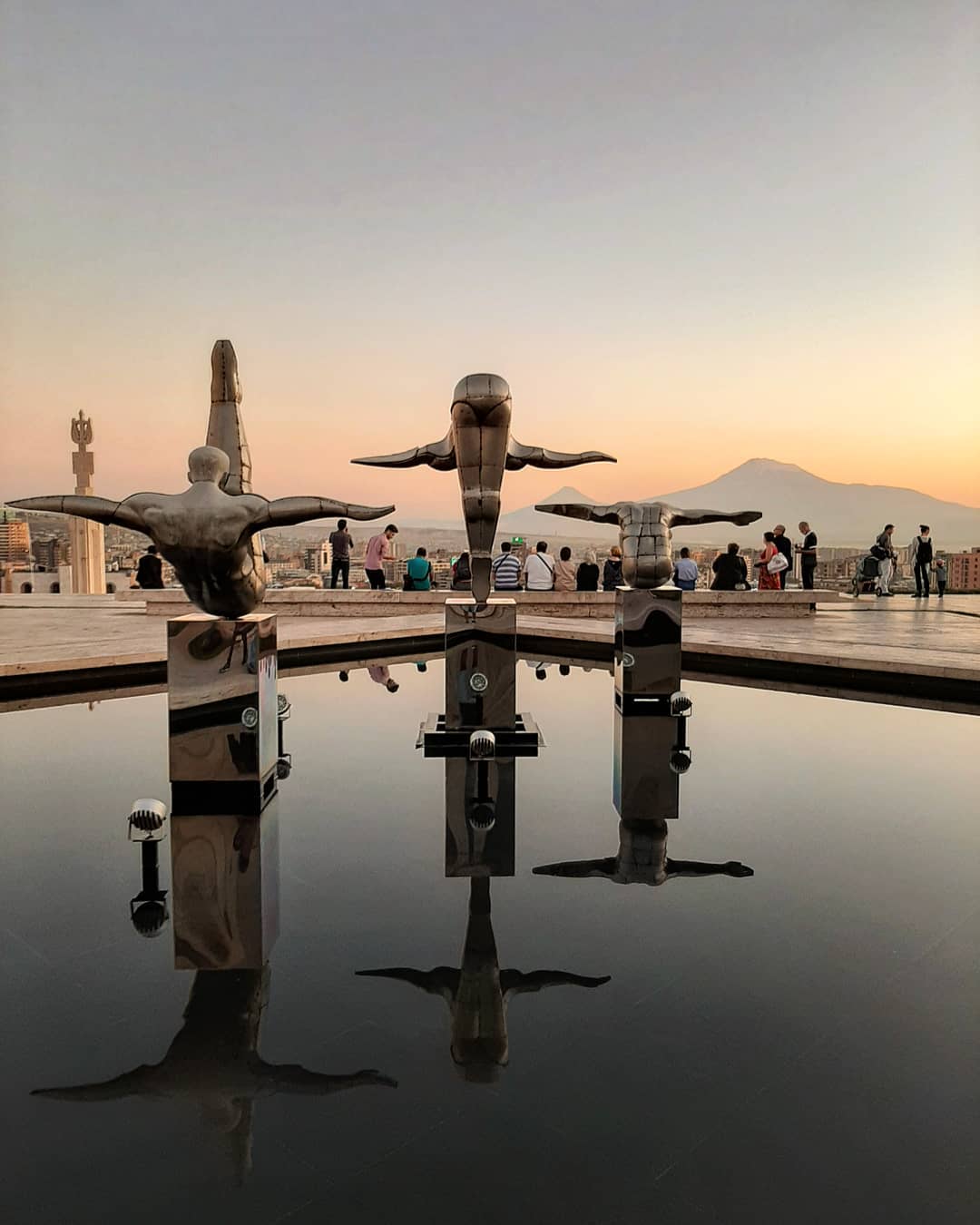The Cafesjian Center for the Arts is dedicated to bringing the best of contemporary art to Armenia and presenting the best of Armenian culture to the world. Inspired by the vision of its founder, Gerard L. Cafesjian, the Center offers a wide variety of exhibitions, including a selection of important work from the Gerard L. Cafesjian Collection of contemporary art. Having celebrated its grand opening in November 2009, CCA continues to exhibit unique works of modern and contemporary art and offers a diverse program of lectures, films, concerts, and numerous educational initiatives for adults and children. Over one million people have visited the Center annually since its opening.
Gerard Leon Cafesjian (1925-2013) was a businessman and philanthropist who founded the Cafesjian Family Foundation (CFF), the Cafesjian Museum Foundation (CMF) and the Cafesjian Center for the Arts.
G. Cafesjian was born on April 26, 1925 in the Bensonhurst neighborhood of Brooklyn, New York. His parents had come to the United States preceding the Armenian Genocide by the Turks in 1915.
G. Cafesjian completely renovated the Cascade site in downtown Yerevan, Armenia. The Cascade was a huge old crumbling Soviet structure of epic proportions. He opened the Cafesjian Center for the Arts at the Cascade in 2009. Over one million people have visited the Center annually since its opening. His goal was to bring some joy into the lives of the Armenians through exposure to art. The Museum enjoys a world-class sculpture garden with works by Botero, Flanagan, Chadwick, Plensa, and Lalanne, to name a few. Admission to the sculpture garden is free and it is now the most prominent meeting place in Armenia.
The building that now houses the Cafesjian Center for the Arts is well known to the Armenian people, especially those living in its capital city of Yerevan. Known as “The Cascade,” the complex was originally conceived by the architect Alexander Tamanyan (1878–1936). Tamanyan desired to connect the northern and central parts of the city—the historic residential and cultural centers of the city—with a vast green area of waterfalls and gardens, cascading down one of the city’s highest promontories. Unfortunately, the plan remained largely forgotten until the late 1970s, when it was revived by Yerevan’s Chief Architect, Jim Torosyan. Torosyan’s conception of the Cascade included Tamanyan’s original plan but incorporated new ideas that included a monumental exterior stairway, a long indoor shaft containing a series of escalators, and an intricate network of halls, courtyards, and outdoor gardens embellished with numerous works of sculpture bearing references to Armenia’s rich history and cultural heritage.
Construction of Torosyan’s design of the Cascade was launched by the Soviets in the 1980s but abandoned after the Armenian earthquake of 1988 and the break-up of the Soviet Union in 1991. With an independent rule and the transition to democracy, Armenia entered a period of severe economic hardship, and the Cascade remained a neglected relic of the Soviet era for more than a decade. Mr. Cafesjian, working with the City of Yerevan and the government of the Republic of Armenia, initiated its recent revitalization in 2002. Over the next seven years, virtually every aspect of the monument was renovated, and much of it completely reconstituted into a Center for the Arts that bears the name of its principal benefactor.
Cafesjian Center for the Arts has also a Museum Store, which never fails to inspire ideas for creative and interesting gifts such as jewelry, glassware, furniture, art books, home decor, Armenian crafts and much more.







